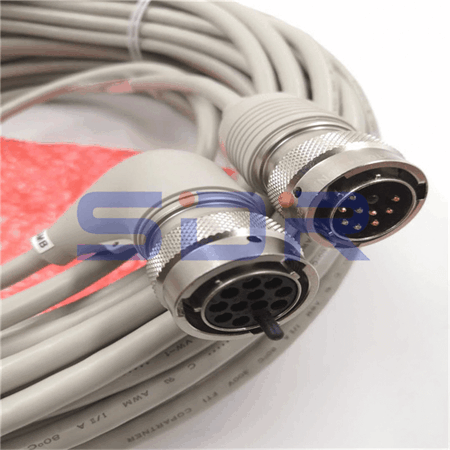Robotics technology has revolutionized manufacturing and industrial processes, offering efficiency and precision like never before. Among the leading players in the field, ABB (Asea Brown Boveri) stands out for its advanced robotics solutions. A crucial component of ABB robots, and robots in general, are cables. In this article, we'll delve into the importance of ABB Robot Cables, explore their various types, and provide insights into their maintenance.
Robot Cables are the lifelines of robotic systems. They serve as the nervous system, transmitting power, data, and signals between the robot controller and its various components. ABB Robot Cables are designed with utmost precision and durability to ensure uninterrupted robot operation.

ABB Robot Cables provide a stable and consistent power supply to the robot's motors and other essential components. This ensures that the robot functions smoothly without unexpected power interruptions.These cables facilitate the transfer of data between the robot controller and sensors, allowing the robot to perceive and respond to its environment accurately. Whether it's a welding robot, a pick-and-place robot, or a painting robot, data transmission is vital for precise and safe operation.ABB robot cables maintain signal integrity, which is crucial for tasks like welding or handling delicate materials. Any signal interference or disruption could lead to costly errors or compromised product quality.Industrial environments can be harsh, with exposure to extreme temperatures, chemicals, and physical stress. ABB robot cables are built to withstand these conditions, ensuring a long service life and minimizing downtime.
ABB offers a wide range of robot cables to meet the diverse needs of different industries and applications. Here are some common types:
Power Cables: These cables deliver electrical power from the controller to the robot's motors and other power-hungry components. They come in various sizes and configurations to handle different power requirements.
Signal and Data Cables: Signal cables transmit sensor data, feedback signals, and other crucial information between the robot and its peripherals. These cables are shielded to prevent electromagnetic interference.
Teaching Pendant Cables: These cables connect the robot controller to the teaching pendant, allowing operators to program and control the robot's movements manually.
Dress Packs: Dress packs are specially designed cable bundles that route and protect cables along the robot's arm. They help reduce cable wear and prevent tangling.
To ensure the longevity and optimal performance of ABB robot cables, consider these maintenance tips:
Regular Inspection: Periodically inspect cables for signs of wear, damage, or fraying. Replace any damaged cables promptly to prevent downtime and potential safety hazards.
Cable Management: Properly manage cable routing to prevent excessive bending, twisting, or pinching. Use dress packs and cable carriers to protect cables from abrasion.
Environmental Considerations: Be mindful of the robot's operating environment. Ensure that cables are protected from exposure to chemicals, extreme temperatures, and physical hazards.
Scheduled Maintenance: Follow ABB's recommended maintenance schedule for your specific robot model. Regular maintenance can identify potential cable issues before they lead to breakdowns.
In conclusion, ABB robot cables are indispensable components that ensure the reliable and efficient operation of ABB robots across various industries. Understanding their importance, types, and maintenance requirements is key to maximizing the performance and lifespan of these critical components. By taking good care of your ABB robot cables, you can enjoy the full benefits of ABB's advanced robotics technology while minimizing downtime and maintenance costs.